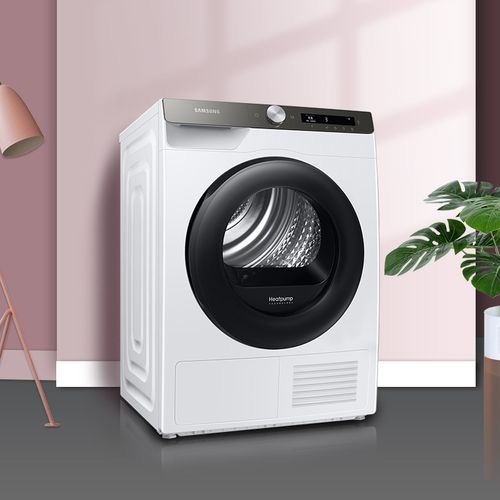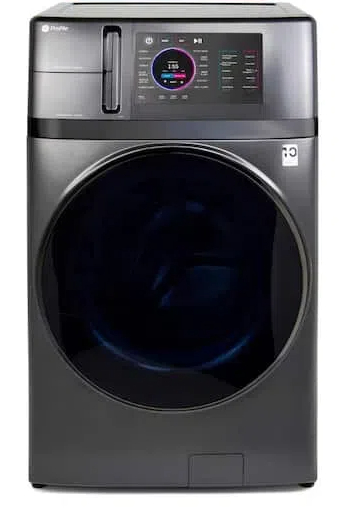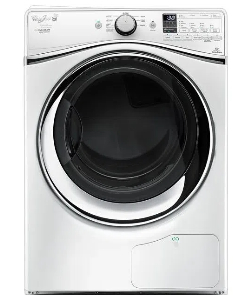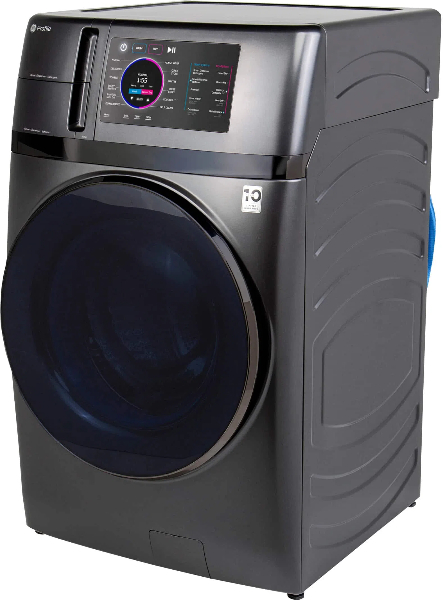
Content Menu
● Introduction
● Understanding Heat Pump Technology
>> How Heat Pumps Work
● What Sets Heat Pump Washer Dryers Apart?
>> Space-Saving Design
>> Energy Efficiency
>> Gentle on Clothes
>> Ventless Operation
● How Heat Pump Washer Dryers Work
>> The Washing Cycle
>> The Drying Cycle
● Benefits of Choosing a Heat Pump Washer Dryer
>> 1. Energy Savings
>> 2. Cost-Effectiveness
>> 3. Fabric Care
>> 4. Versatility
>> 5. Space Efficiency
>> 6. Convenience
● Considerations When Choosing a Heat Pump Washer Dryer
>> 1. Capacity
>> 2. Drying Time
>> 3. Initial Cost
>> 4. Maintenance
● ENERGY STAR Certification
● Installation and Maintenance Tips
>> Installation
>> Maintenance
● The Future of Laundry: Smart Features and Connectivity
>> Smart Features
>> Energy Monitoring
● Conclusion
● Frequently Asked Questions
>> Q1: How much energy can I save with a heat pump washer dryer compared to traditional models?
>> Q2: Are heat pump washer dryers suitable for all types of clothing?
>> Q3: Do heat pump washer dryers require special installation?
>> Q4: How long do heat pump washer dryers typically last?
>> Q5: Can heat pump washer dryers handle large loads of laundry?
Introduction
In the ever-evolving world of home appliances, heat pump washer dryers have emerged as a game-changing innovation, promising to revolutionize the way we approach laundry. These cutting-edge machines combine the functionality of a washer and dryer into a single unit, utilizing advanced heat pump technology to deliver superior energy efficiency and performance. If you've been wondering, "What is a heat pump washer dryer?" you're in the right place. This comprehensive guide will delve into the intricacies of these appliances, exploring their benefits, functionality, and why they might be the perfect addition to your home.
Understanding Heat Pump Technology
Before we dive into the specifics of heat pump washer dryers, it's essential to understand the core technology that powers these innovative appliances. Heat pump technology is a revolutionary approach to heating and cooling that has been gaining traction in various applications, from home HVAC systems to water heaters, and now, laundry appliances.

How Heat Pumps Work
At its core, a heat pump is a device that transfers heat from one location to another using a refrigeration cycle. Unlike traditional heating systems that generate heat, heat pumps move existing heat from one place to another. This process is incredibly efficient because it requires less energy to move heat than to create it.
In the context of a dryer, the heat pump system works by:
1. Extracting warm, moist air from the drum
2. Passing this air over a cold evaporator coil, which condenses the moisture
3. Reheating the now-dry air using a condenser coil
4. Circulating the warm, dry air back into the drum to continue the drying process
This closed-loop system allows for significant energy savings compared to traditional vented or condenser dryers.
What Sets Heat Pump Washer Dryers Apart?
Heat pump washer dryers are a unique category of appliances that combine the functionality of a washing machine and a heat pump dryer into a single unit. This integration offers several advantages over traditional separate washer and dryer setups.
Space-Saving Design
One of the most apparent benefits of a heat pump washer dryer combo is its space-saving design. By combining two appliances into one, these units are ideal for apartments, small homes, or any living space where square footage is at a premium. This all-in-one solution eliminates the need for separate laundry machines, freeing up valuable floor space for other uses.
Energy Efficiency
Heat pump washer dryers are renowned for their exceptional energy efficiency. The heat pump technology used in these appliances can reduce energy consumption by up to 50% compared to conventional dryers. This significant reduction in energy use not only helps lower your utility bills but also reduces your carbon footprint, making heat pump washer dryers an environmentally friendly choice.
Gentle on Clothes
Another notable advantage of heat pump dryer technology is its gentle treatment of fabrics. Traditional dryers often use high temperatures to remove moisture from clothes, which can lead to shrinkage, wear, and damage over time. Heat pump dryers, on the other hand, operate at lower temperatures while still effectively drying clothes. This gentler approach helps preserve the quality and longevity of your garments, making it an excellent choice for those with delicate or high-value clothing items.
Ventless Operation
Unlike traditional vented dryers that require an exhaust duct to expel hot, moist air, heat pump washer dryers are ventless. This feature offers greater flexibility in terms of installation, as you're not limited by the need for external venting. It also means that these appliances don't expel warm air to the outside, making them more energy-efficient and suitable for use in various climates and housing situations.

How Heat Pump Washer Dryers Work
To fully appreciate the innovation behind heat pump washer dryers, it's helpful to understand their operation in more detail.
The Washing Cycle
The washing cycle in a heat pump washer dryer is similar to that of a standard washing machine. The unit fills with water, agitates the clothes to remove dirt and stains, and then spins to remove excess water. However, the integration with the drying system allows for a seamless transition to the drying cycle without the need to transfer clothes manually.
The Drying Cycle
Once the washing cycle is complete, the drying process begins. Here's a step-by-step breakdown of how the heat pump dryer works:
1. Air Circulation: Warm air is circulated through the drum, beginning the drying process.
2. Moisture Extraction: As the air passes through the clothes, it picks up moisture.
3. Heat Exchange: The warm, moist air is then drawn over a cold evaporator coil. This causes the moisture to condense into water, which is collected in a reservoir or drained away.
4. Air Reheating: The now-cooler, dry air passes over a condenser coil, which reheats it.
5. Recirculation: The warm, dry air is then recirculated back into the drum to continue the drying process.
This closed-loop system is highly efficient, as it continuously recycles and reheats the air rather than expelling it and heating new air from scratch.
Benefits of Choosing a Heat Pump Washer Dryer
Now that we understand how heat pump washer dryers work, let's explore the numerous benefits they offer to consumers.
1. Energy Savings
The most significant advantage of heat pump washer dryers is their energy efficiency. By using heat pump technology, these appliances can achieve energy savings of up to 50% compared to conventional dryers. This translates to lower electricity bills and a reduced environmental impact.
2. Cost-Effectiveness
While the initial purchase price of a heat pump washer dryer may be higher than traditional models, the long-term savings on energy costs can offset this investment. Over the lifespan of the appliance, many users find that the reduced operating costs result in significant savings.
3. Fabric Care
The lower drying temperatures used in heat pump dryers are gentler on fabrics, helping to preserve the quality and extend the life of your clothes. This is particularly beneficial for delicate items or garments with special care instructions.
4. Versatility
Heat pump washer dryers offer a wide range of washing and drying programs, catering to various fabric types and load sizes. Many models also include smart features and connectivity options, allowing for greater control and customization of laundry cycles.
5. Space Efficiency
For those living in apartments or homes with limited space, a heat pump washer dryer combo eliminates the need for separate machines, freeing up valuable floor space.
6. Convenience
The all-in-one nature of these appliances means you can set it to wash and dry your clothes in a single cycle, reducing the time and effort spent on laundry tasks.
Considerations When Choosing a Heat Pump Washer Dryer
While heat pump washer dryers offer numerous advantages, there are some factors to consider before making a purchase:
1. Capacity
Heat pump washer dryers typically have smaller capacities than separate washers and dryers. Consider your household's laundry needs when selecting a model to ensure it can handle your regular loads.
2. Drying Time
Heat pump dryers generally take longer to dry clothes compared to traditional vented dryers. If quick drying times are a priority, this may be a factor to consider.
3. Initial Cost
As mentioned earlier, the upfront cost of a heat pump washer dryer is often higher than traditional models. However, the long-term energy savings can offset this initial investment.
4. Maintenance
Heat pump dryers require regular maintenance, including cleaning the heat exchanger and emptying the condensate tank (if not directly plumbed). This is crucial for maintaining optimal performance and efficiency.
ENERGY STAR Certification
When shopping for a heat pump washer dryer, look for models that have earned ENERGY STAR certification. ENERGY STAR is a voluntary program run by the U.S. Environmental Protection Agency (EPA) that identifies and promotes energy-efficient products.
ENERGY STAR certified heat pump dryers must meet strict energy efficiency guidelines set by the EPA and the U.S. Department of Energy. These models typically use about 20% less energy than standard models, making them an excellent choice for environmentally conscious consumers looking to reduce their energy consumption and utility bills.
Installation and Maintenance Tips
To get the most out of your heat pump washer dryer, proper installation and regular maintenance are essential. Here are some tips to keep in mind:
Installation
1. Ensure proper ventilation: While heat pump dryers don't require external venting, they still need adequate airflow around the unit.
2. Level the machine: A properly leveled machine ensures optimal performance and reduces noise and vibration.
3. Consider drainage options: Some models allow for direct plumbing for water drainage, which can be more convenient than emptying a water reservoir.
Maintenance
1. Clean the lint filter: Regular cleaning of the lint filter is crucial for maintaining efficiency and preventing fire hazards.
2. Clean the heat exchanger: Periodically clean the heat exchanger to ensure optimal heat transfer and energy efficiency.
3. Check and clean the condensate system: Ensure the condensate drain or tank is clear and functioning properly to prevent water leaks.
4. Inspect door seals: Regularly check and clean the door seals to maintain an airtight seal during operation.
The Future of Laundry: Smart Features and Connectivity
As technology continues to advance, many heat pump washer dryers now come equipped with smart features and connectivity options. These innovations are taking laundry care to the next level, offering unprecedented convenience and control.
Smart Features
1. Wi-Fi Connectivity: Many modern heat pump washer dryers can connect to your home's Wi-Fi network, allowing you to control and monitor your laundry from your smartphone or tablet.
2. Custom Cycles: Some models offer the ability to create and save custom wash and dry cycles tailored to your specific needs.
3. Auto-Dispensing: Advanced models can automatically dispense the right amount of detergent and fabric softener based on the load size and fabric type.
4. Voice Control: Integration with smart home assistants like Amazon Alexa or Google Home allows for voice-activated control of your laundry appliance.
Energy Monitoring
Smart heat pump washer dryers often come with energy monitoring features, allowing you to track your energy usage in real-time. This information can help you make more informed decisions about your laundry habits and further optimize your energy consumption.
Conclusion
Heat pump washer dryers represent a significant leap forward in laundry technology, offering a combination of energy efficiency, space-saving design, and gentle fabric care. While they may require a higher initial investment, the long-term benefits in terms of energy savings, convenience, and clothing preservation make them an attractive option for many households.
As with any major appliance purchase, it's essential to consider your specific needs, budget, and living situation when deciding if a heat pump washer dryer is right for you. By understanding the technology, benefits, and considerations outlined in this guide, you'll be well-equipped to make an informed decision about incorporating this innovative appliance into your home.
With ongoing advancements in energy efficiency and smart technology, heat pump washer dryers are poised to play an increasingly important role in the future of home laundry care. Whether you're looking to reduce your carbon footprint, save on energy costs, or simply streamline your laundry routine, a heat pump washer dryer could be the perfect solution for your modern lifestyle.

Frequently Asked Questions
Q1: How much energy can I save with a heat pump washer dryer compared to traditional models?
A1: Heat pump washer dryers can save up to 50% on energy consumption compared to conventional dryers. The exact savings will depend on your usage patterns and local energy costs, but many users report significant reductions in their utility bills after switching to a heat pump model.
Q2: Are heat pump washer dryers suitable for all types of clothing?
A2: Yes, heat pump washer dryers are generally suitable for all types of clothing. In fact, they are often gentler on fabrics than traditional dryers due to their lower operating temperatures. However, always check the care labels on your garments and use the appropriate cycle settings for best results.
Q3: Do heat pump washer dryers require special installation?
A3: Heat pump washer dryers don't require special venting like traditional dryers, making them easier to install in various locations. However, they do need adequate ventilation around the unit and may require a drain connection or regular emptying of a water reservoir. It's always best to consult the manufacturer's installation guidelines or hire a professional for proper setup.
Q4: How long do heat pump washer dryers typically last?
A4: With proper maintenance, a heat pump washer dryer can last 10-15 years or more. Regular cleaning of filters, heat exchangers, and proper use can significantly extend the lifespan of these appliances.
Q5: Can heat pump washer dryers handle large loads of laundry?
A5: While heat pump washer dryers generally have smaller capacities than separate washers and dryers, many models can handle medium to large loads effectively. However, it's important to note that overloading can reduce efficiency and drying performance. Always follow the manufacturer's recommendations for load sizes to ensure optimal performance.












